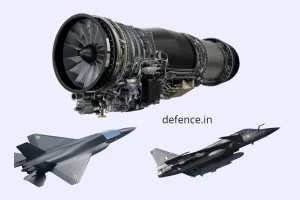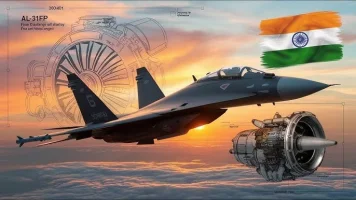- Views: 3K
- Replies: 32
In a decision with significant implications for the Indian Air Force (IAF), India has opted to retain the existing AL-31FP engines for its fleet of 84 Su-30MKI fighter aircraft, declining an offer from Russia to upgrade them with the more advanced AL-41F engines.
While the AL-41F offers superior thrust and improved Mean Time Between Overhauls (MTBO), the IAF's choice reflects a prioritization of logistical efficiency and training continuity.
An official from Hindustan Aeronautics Limited (HAL) confirmed that the decision to stay with the AL-31FP engines was primarily driven by the IAF.
Despite the AL-41F's proven compatibility with the Su-30MKI platform, as demonstrated by the Russian Air Force's transition to these engines on their Su-30SM aircraft, several factors influenced this decision.
Over the years, HAL, in collaboration with the Gas Turbine Research Establishment (GTRE), has successfully addressed early technical issues with the AL-31FP engines.
Furthermore, HAL has achieved the capability to manufacture these engines domestically from raw materials, enhancing India's self-reliance in engine production.
Logistical considerations also played a key role in the IAF's decision. While the AL-41F shares some commonalities with the AL-31FP in terms of service ground tools, transitioning to the new engine would necessitate significant reskilling of ground crew for maintenance and repairs.
Additionally, the higher thrust of the AL-41F could alter the flight dynamics of the Su-30MKI, requiring pilot reorientation and potentially new training modules.
Ultimately, the IAF chose to avoid the additional costs and time associated with transitioning to a new engine type, especially when the existing engines have been effectively localized and improved.
By sticking with the AL-31FP, the IAF can leverage its established supply chain and maintenance ecosystem without significant disruption.
However, this choice means forgoing the potential performance enhancements offered by the AL-41F, including increased thrust and engine longevity. The Su-30MKI, a cornerstone of the IAF's fighter fleet, will still undergo upgrades to become the "Super Sukhoi," but these will focus on avionics, radar systems, and weapon integration rather than a change in propulsion.
This decision reflects a strategic balancing act between technological advancement and operational continuity. The IAF has prioritized minimizing disruption to its existing infrastructure and expertise, even if it means forgoing potential performance gains.


